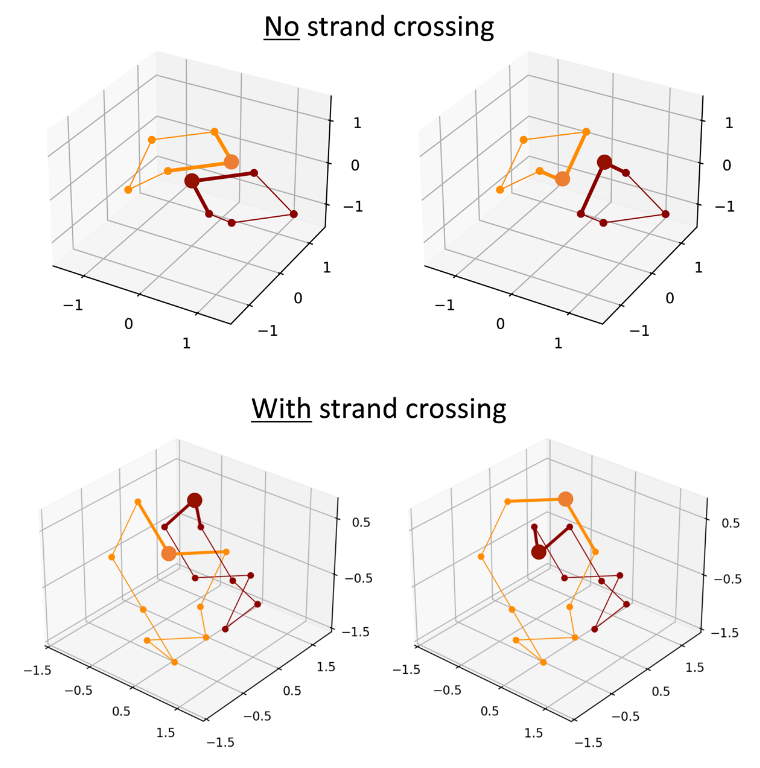We present computer simulations of a dynamic Monte Carlo algorithm for polymer chains on the FCC lattice which takes explicitly into account the possibility to overcome topological constraints by controlling the rate at which nearby polymer strands may cross through each other. By applying the method to systems of interacting ring polymers at melt conditions, we characterize their structure and dynamics by measuring, in particular, the amounts of knots and links which are formed during the relaxation process. In comparison to standard melts of unknotted and unconcatenated rings, our simulations demonstrate that the mechanism of strand crossing is responsible for fluidizing the melt provided the time scale of the process is faster than the internal relaxation of the chain, in agreement with recent experiments employing solutions of DNA rings in the presence of the type II topoisomerase enzyme. In the opposite case of slow rates the melt is shown to become slower, and this prediction may be easily validated experimentally.
Download a copy of the manuscript (preprint version)

